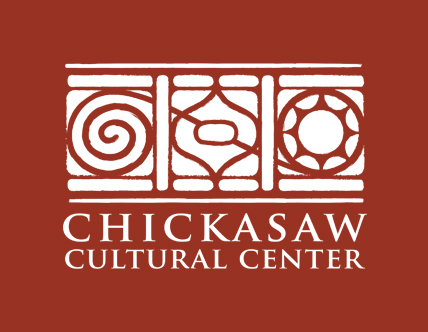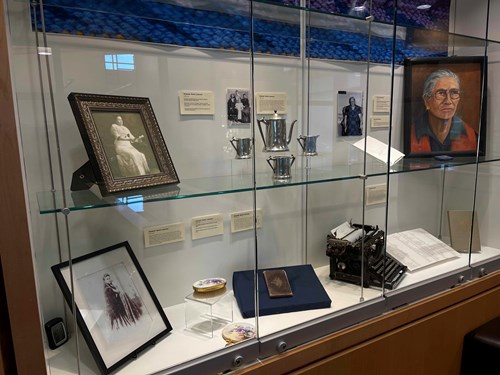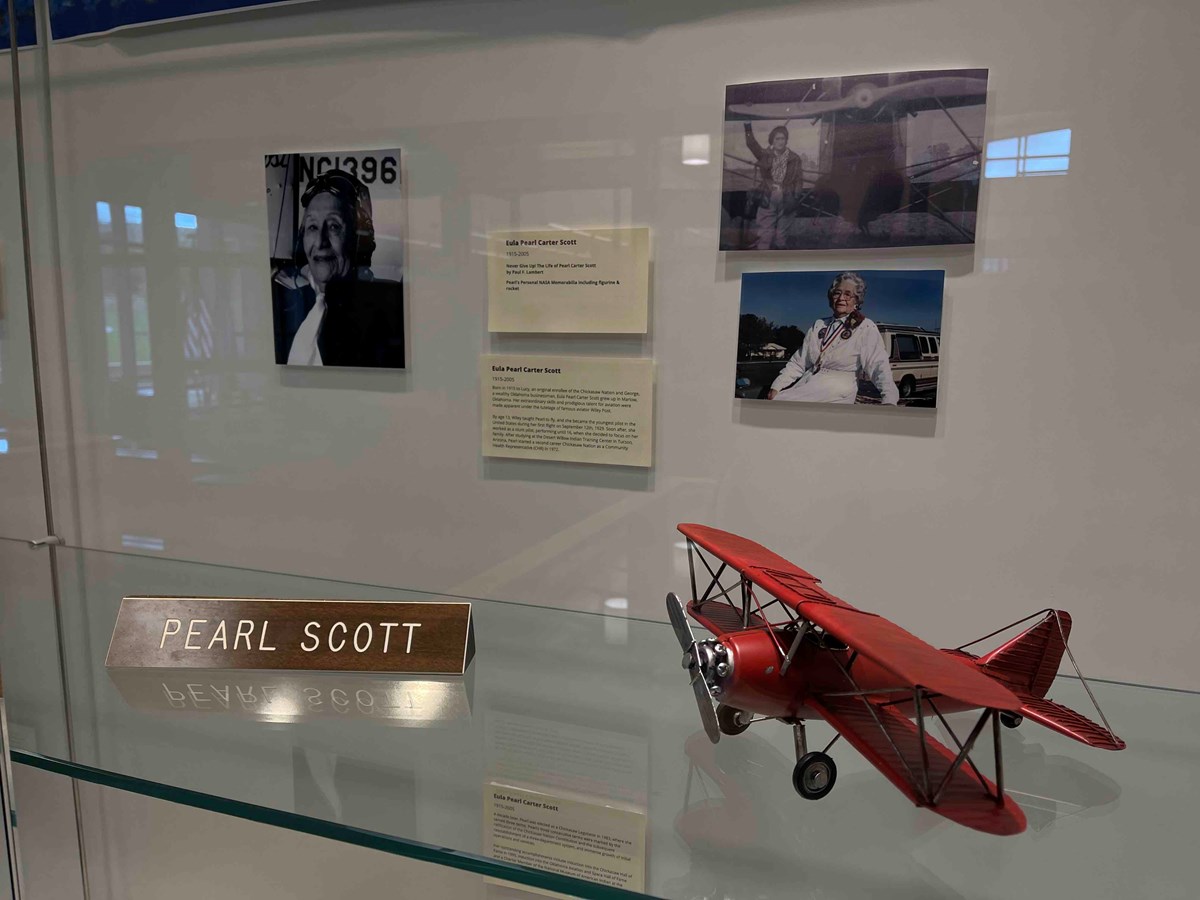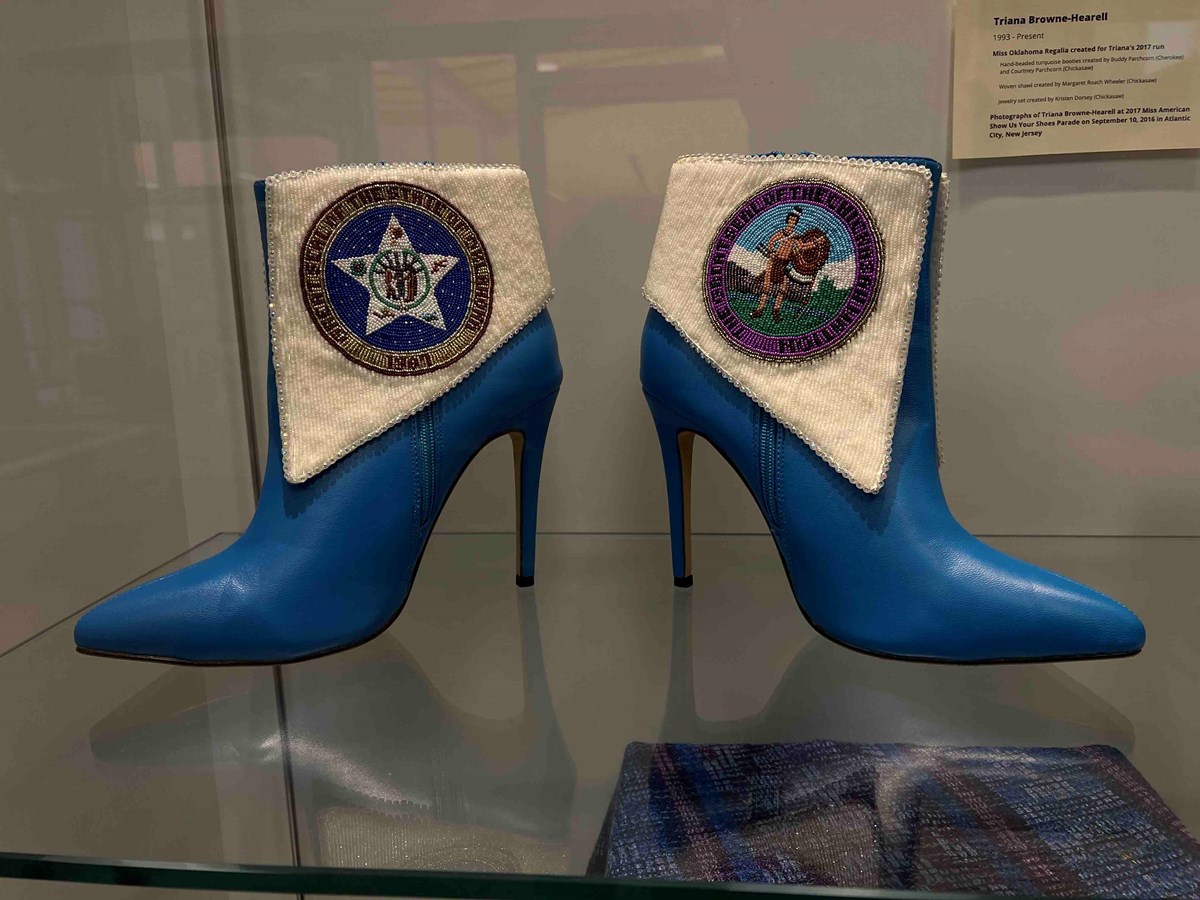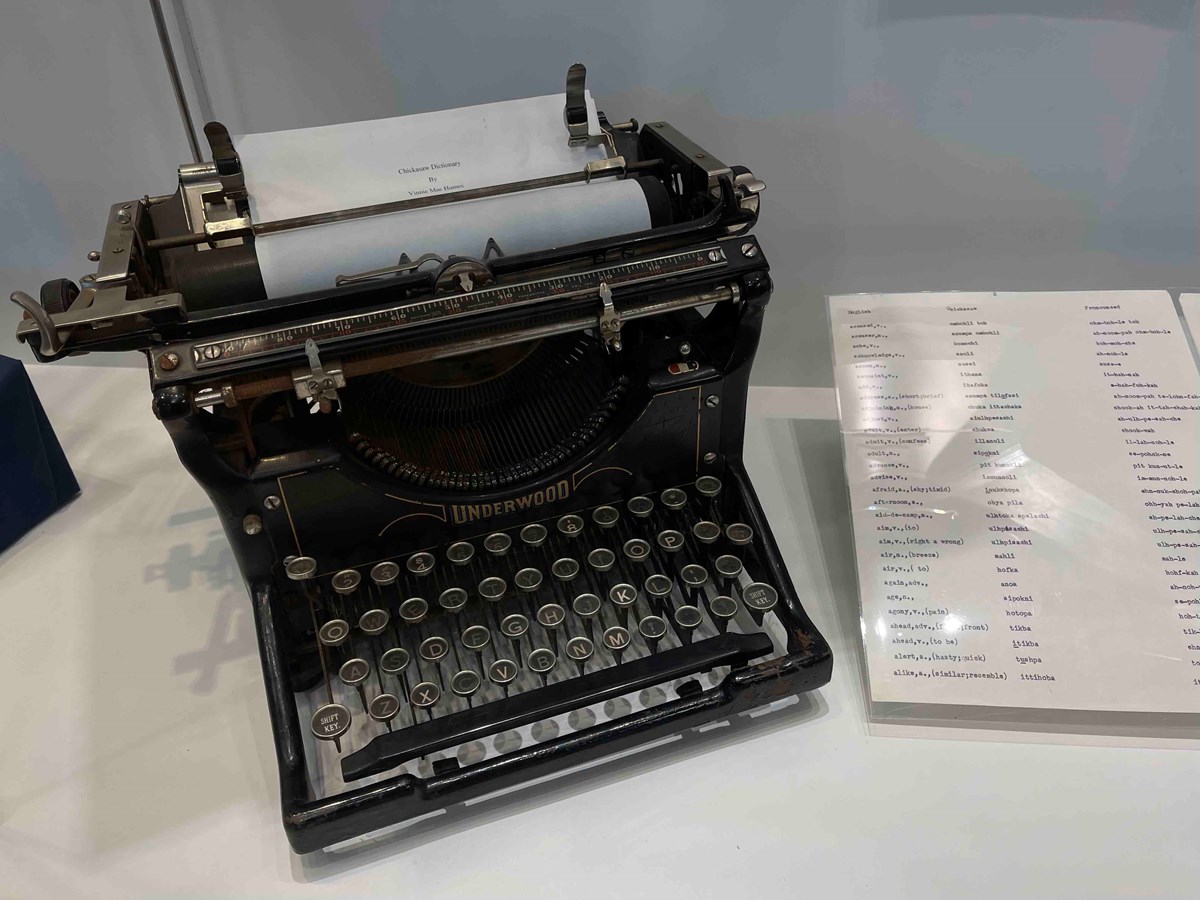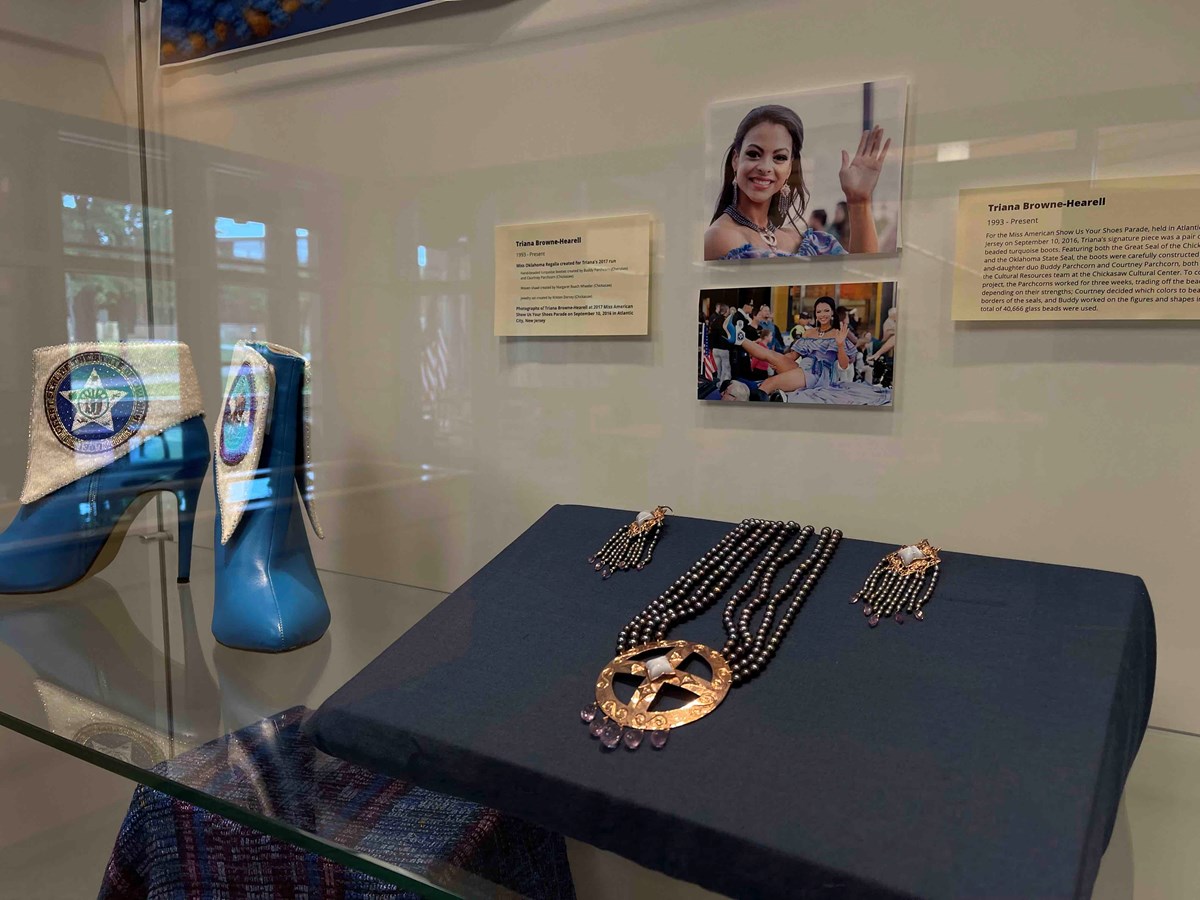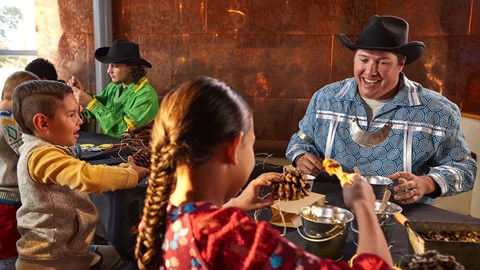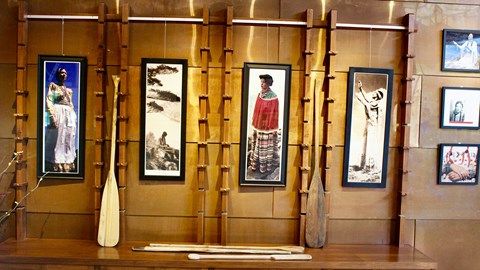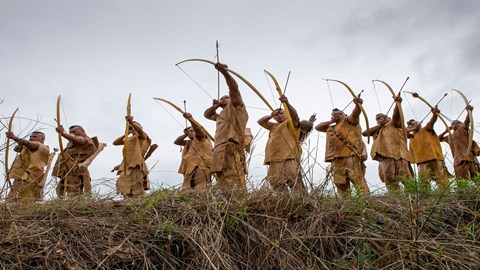Chickasaw women have contributed to the creation and preservation of Chickasaw culture since time immemorial. Chikasha Ihoo Holiitoblichi: Celebrating Chickasaw Women recognizes the diverse and extraordinary contributions of Chickasaw women by showcasing objects from the Chickasaw Collection. The accomplishments of Chickasaw women Lorena Elizabeth "Bettie" Johnston, Vinnie May "Sadie" Humes, Eula Pearl Carter Scott and Triana Browne-Hearrell are among those highlighted on display.
Lorena Elizabeth "Bettie" (Harper) Johnston (1865-1943)
The Chickasaw White House is a historic museum, on the National Register of Historic Places, restored to its former appearance circa 1900 by the Chickasaw Nation to retain its astounding presence and decor, which was influenced by Lorena Elizabeth "Bettie" (Harper) Johnston.
Bettie was the wife of Chickasaw Nation Governor Douglas H. Johnston. From 1885 to 1889, Bettie served as a teacher at Bloomfield Academy, where she worked with Governor Johnston, who then served as superintendent. Also known for her medicinal skills, Bettie utilized herbs and plants for home remedies and meal preparations.
Upon the advent of the Dawes Commission's disbandment in 1905 and Oklahoma statehood in of 1907, Governor Johnston's office was moved to their home. Soon after, the Chickasaw White House became a hub of political activity hosting many prominent politicians, including members of the Dawes Commission. Bettie is remembered today not only for her influence on the property's beauty and serving as hostess to many political and social events, but also for the care she provided to her family and community, which remained her top priority.
Vinnie May "Sadie" (Seeley) James Humes (1903-1996)
Vinnie May "Sadie" (Seeley) James Humes was born in Coatworth, Indian Territory, in 1903 and was an original Dawes enrollee with the Chickasaw Nation. Sadie, along with her husband, Rev. Jesse Humes, co-authored "A Chickasaw Dictionary," which is considered an indispensable compilation of the language and an invaluable contribution for the Chickasaw people and those learning the Chickasaw language.
The Humes' work was compiled and completed after Chickasaw Governor Overton James persuaded his mother and stepfather, Sadie and Jesse, of the critical importance of preserving the tribe's language. The couple spent two-and-a-half years writing and editing the dictionary. After Rev. Jesse Humes' death in 1966, Sadie completed the dictionary on her own. Originally published in 1973, "A Chickasaw Dictionary" is now accessible online with accompanying audio pronunciation files.
Eula Pearl Carter Scott (1915 -2005)
Born in 1915 to Lucy, an original enrollee of the Chickasaw Nation, and George, a wealthy Oklahoma businessman, Eula Pearl Carter Scott grew up in Marlow, Oklahoma. Her skills and talent for aviation were made apparent under the tutelage of famous aviator Wiley Post.
At age 13, she became the youngest pilot in the United States during her first flight on Sept. 12, 1929. Soon after, she worked as a stunt pilot, performing until age 16, when she decided to focus on her family.
Pearl started a second career within the Chickasaw Nation as a Community Health Representative (CHR) in 1972. A decade later, Pearl was elected as a Chickasaw Legislator in 1983, where she served three terms. Pearl's three consecutive terms were marked by the ratification of the Chickasaw Nation Constitution and the subsequent reestablishment of a three-department system, and immense growth of tribal operations and services.
Her outstanding accomplishments include induction into the Chickasaw Hall of Fame in 1995, induction into the Oklahoma Aviation and Space Hall of Fame and charter member of the
National Museum of American Indian at the Smithsonian. Pearl's life story was featured in the award-winning film Pearl produced by Chickasaw Nation Productions.
Triana Browne-Hearrell (1993-Present)
Triana Browne-Hearrell was born with heart troubles, yet participated as an athlete and a
performer in music and theater. As a teenager, her success in a local beauty pageant led her to compete in the Miss Georgia Outstanding Teen Program, part of the Miss America system. Upon reaching college, she temporarily put her pageant career on hold before returning to win the titles of Miss Oklahoma State University and then Miss Oklahoma City.
After graduating in 2016 with a bachelor’s degree in human development and family sciences, Triana coached children and youth for the USA Track and Field summer teams. That year she would be appointed regional coordinator for both the Winter and Summer Special Olympics. She has also collaborated with the American Heart Association, as well as the Boys and Girls Club in Tulsa and Oklahoma City.
Triana earned the title of Miss Oklahoma 2017 and competed for the national Miss America title. She traveled the nation as a cultural ambassador, speaking to more than 100,000 people and promoting her platform of "Bridging the Cultural Divide." She then triumphed again as Miss Oklahoma USA in 2019.
For the Miss America Show Us Your Shoes Parade in September 2016, Triana's signature piece was a pair of hand-beaded turquoise boots. Featuring both the Great Seal of the Chickasaw Nation and the Oklahoma State Seal, the boots were carefully constructed by Chickasaw father-and-daughter duo Buddy and Courtney Parchcorn. To complete this project, the Parchcorns worked for three weeks, utilizing a total of 40,666 glass beads.
